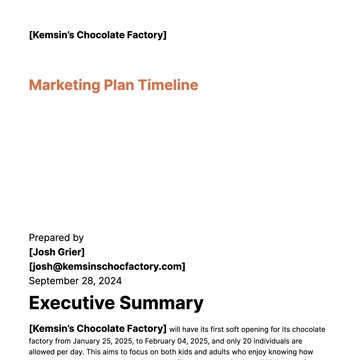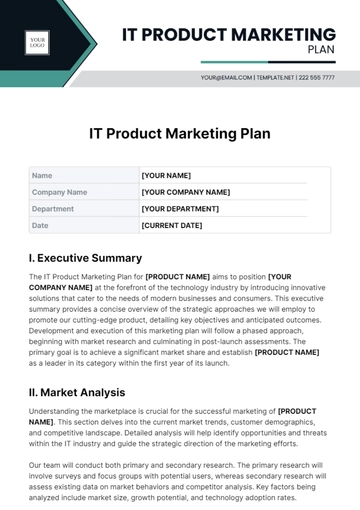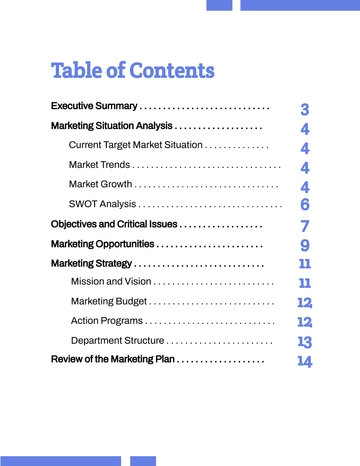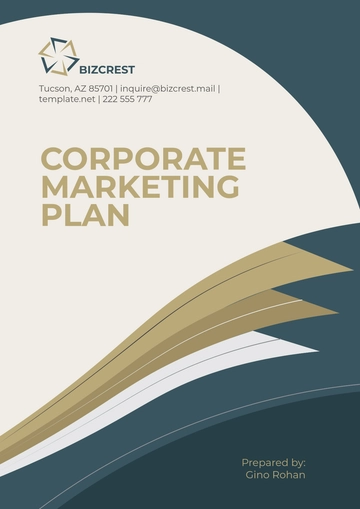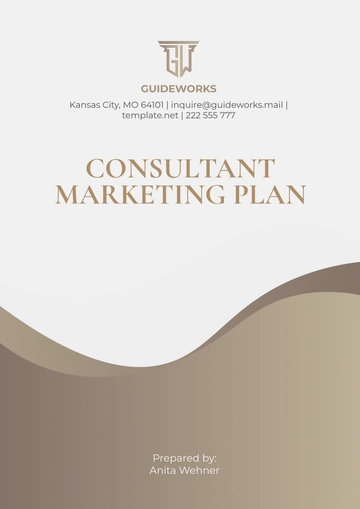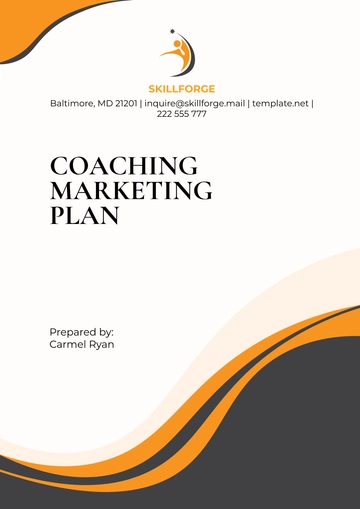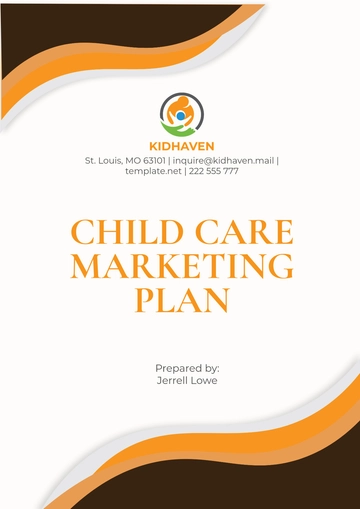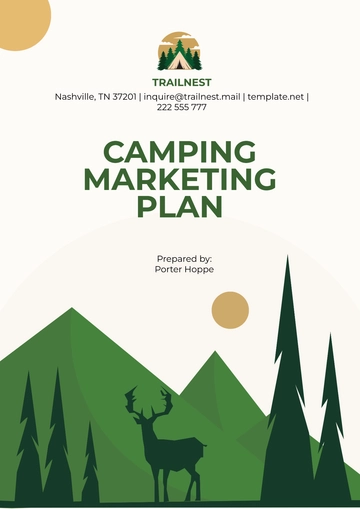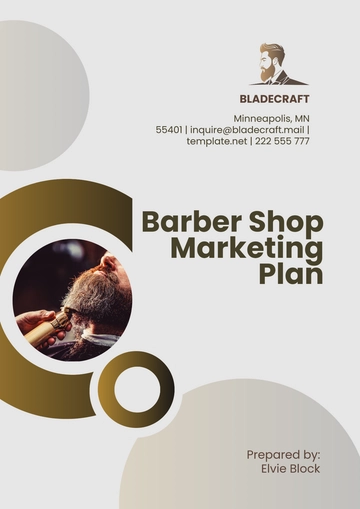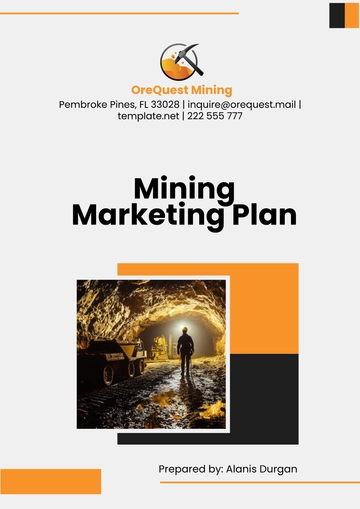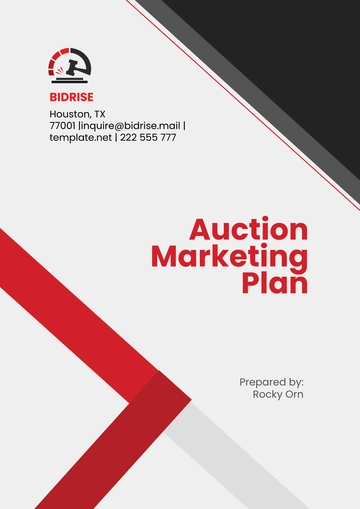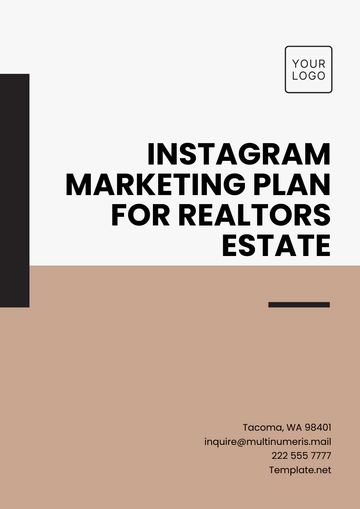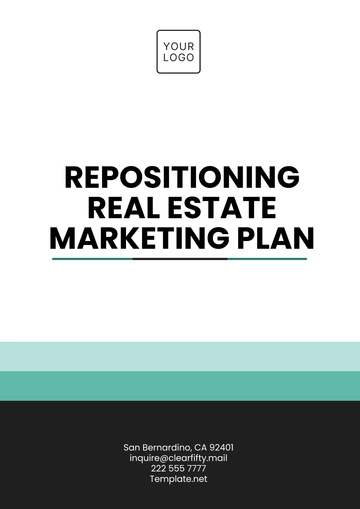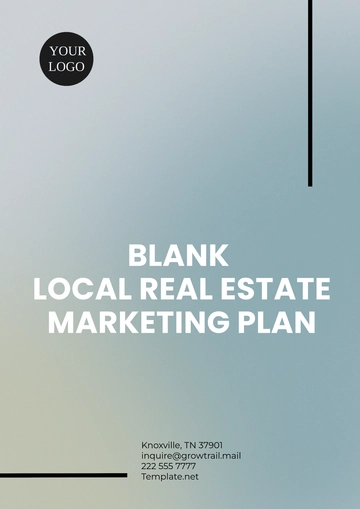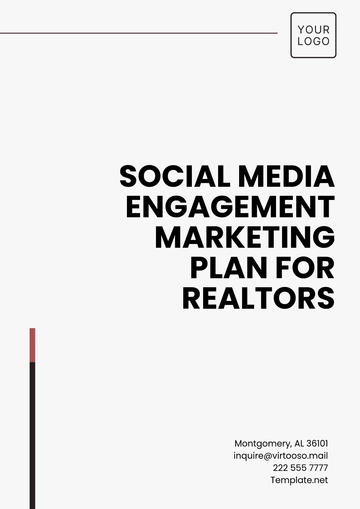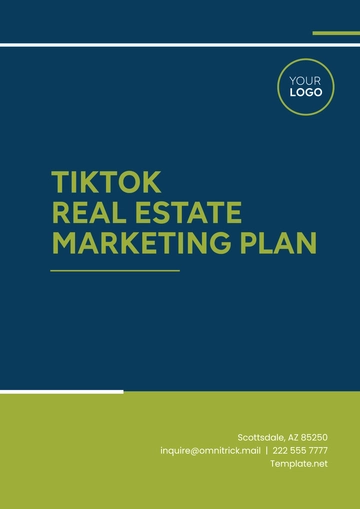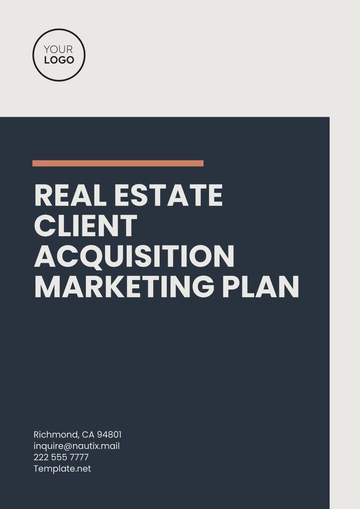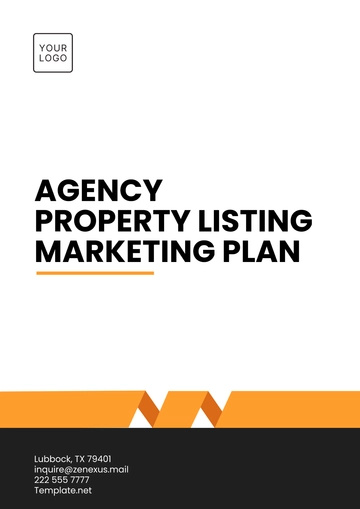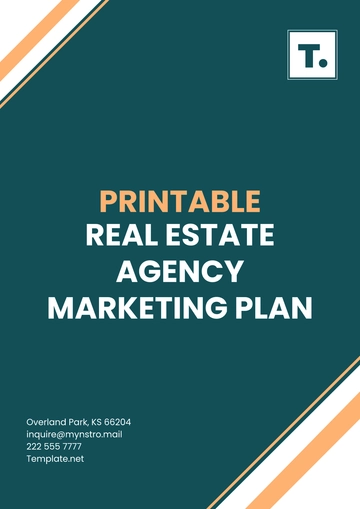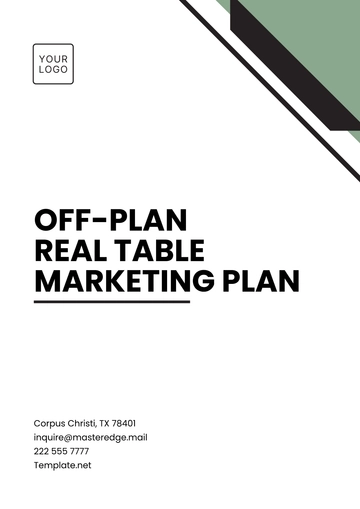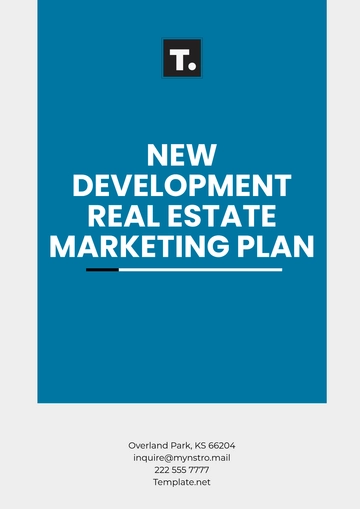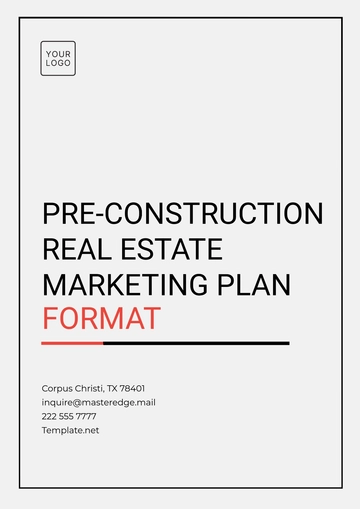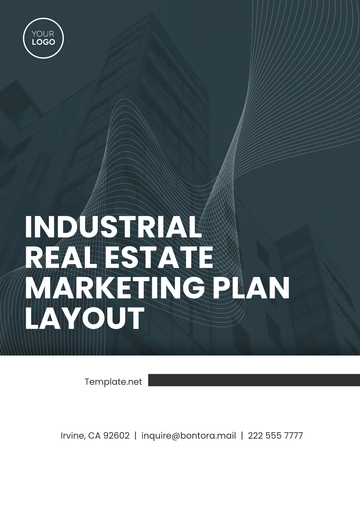Free Simple Car Wash Email Marketing Plan
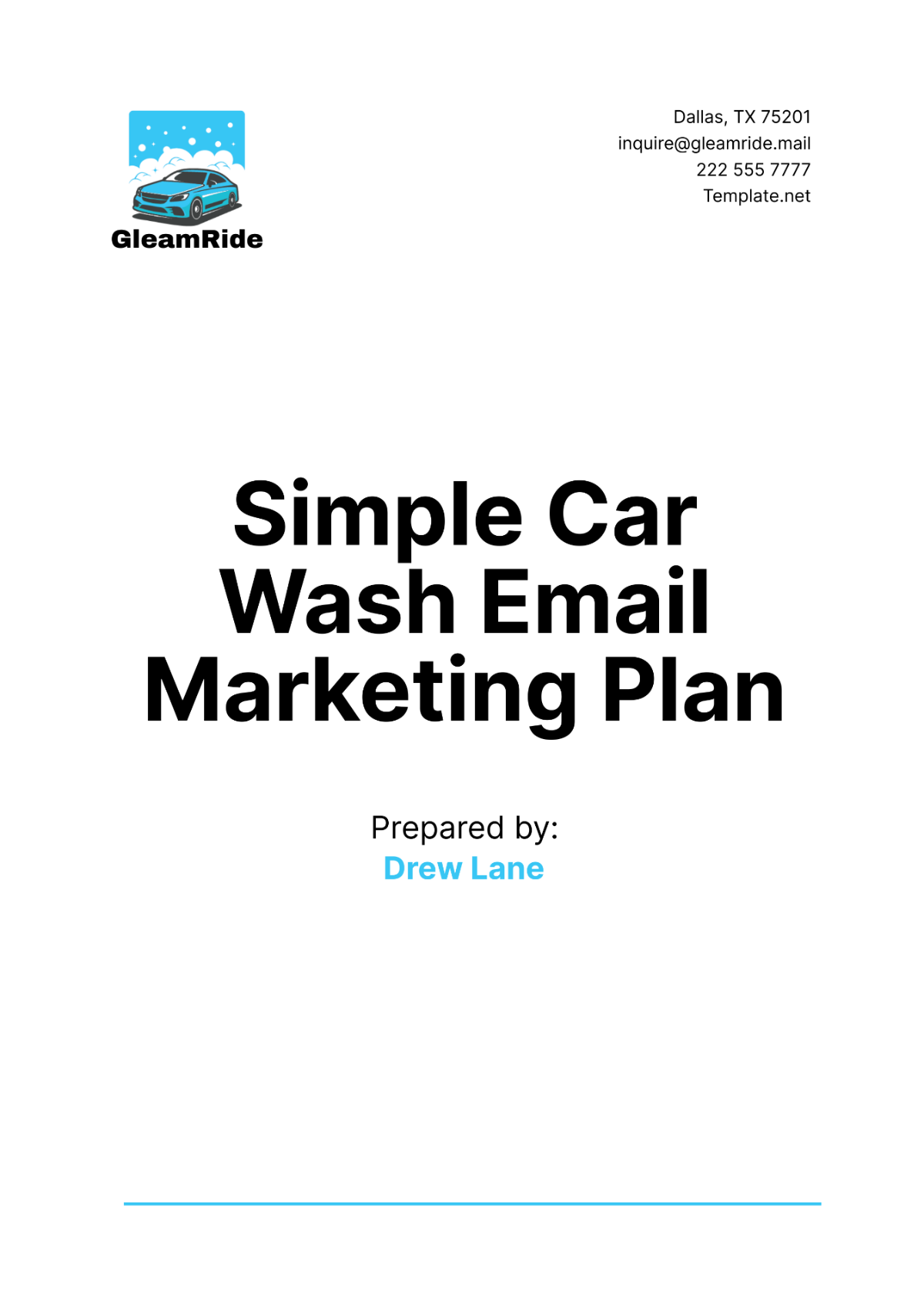
I. Executive Summary
This Simple Car Wash Email Marketing Plan of [Your Company Name] outlines the strategies and initiatives to enhance our email marketing efforts for the year 2060. This plan aims to increase customer engagement, drive sales, and build brand loyalty through targeted email campaigns. By leveraging data analytics and customer insights, we aim to deliver personalized and relevant content to our audience.
In 2060, we plan to reach an email open rate of 30%, a Click-through Rate (CTR) of 10%, and an overall Return on Investment (ROI) of 400%. With an allocated budget of $50,000, our marketing team will implement a series of campaigns, including seasonal promotions, customer loyalty programs, and referral incentives. We will also integrate advanced email automation tools to streamline our processes and improve efficiency.
The Key Performance Indicators (KPIs) for this plan include open rates, CTR, conversion rates, and customer retention rates. Through consistent observation and analysis of these metrics, we will ensure that our email marketing initiatives are both effective and closely aligned with our business objectives.
II. Objectives
A. Increase Customer Engagement
Boost Open Rates: Aim to increase our email open rates to 30% by focusing on compelling subject lines and personalized content. Higher open rates indicate better engagement with our email content.
Enhance CTR: Target a 10% click-through rate by optimizing email design and including clear calls-to-action (CTAs). Improved CTRs show that recipients are interested in our offerings.
Customer Interaction: Encourage more interaction with our emails by including interactive elements such as surveys and feedback forms. This will help us gather valuable customer insights.
B. Drive Sales
Promotional Campaigns: Implement seasonal and holiday promotional campaigns to boost sales during peak periods. Timely promotions can significantly increase revenue.
Upselling and Cross-Selling: Use targeted email campaigns to promote related products and services to existing customers. Upselling and cross-selling can enhance average order value.
Abandoned Cart Emails: Send automated emails to customers who abandon their shopping carts to recover lost sales. This tactic can help recapture potential revenue.
C. Build Brand Loyalty
Loyalty Programs: Develop and promote a customer loyalty program through email marketing to encourage repeat business. Loyalty programs increase customer retention.
Personalized Content: Send personalized content based on customer preferences and purchase history. Personalization helps in building a stronger connection with the audience.
Customer Appreciation: Send thank you emails and special offers to loyal customers to show appreciation. Recognizing loyalty fosters long-term relationships.
III. Target Audience
The following table outlines our primary target audience segments for the email marketing campaigns:
No. | Segment | Description |
|---|---|---|
1 | Existing Customers | Customers who have previously used our services. |
2 | New Customers | Individuals who have recently subscribed to our email list. |
3 | Lapsed Customers | Customers who haven't used our services in the past year. |
4 | Referral Leads | Prospective customers referred by existing customers. |
A. Existing Customers
Retention Focus: Our primary goal for existing customers is retention. By sending regular updates and exclusive offers, we aim to keep them engaged and loyal.
Feedback Loop: Solicit feedback from existing customers to improve our services. Understanding their needs and preferences helps us tailor our offerings.
B. New Customers
Welcome Series: Implement a welcome email series to introduce new subscribers to our brand and services. This series will provide an overview of what they can expect.
Initial Offers: Offer special discounts to new customers to encourage their first purchase. Attractive offers can convert subscribers into paying customers.
C. Lapsed Customers
Re-engagement Campaigns: Develop re-engagement campaigns to win back lapsed customers. Highlight new services or improvements to entice them to return.
Special Incentives: Provide special incentives such as discounts or free services to lapsed customers. Incentives can motivate them to give our services another try.
D. Referral Leads
Referral Program Promotion: Promote our referral program to existing customers to encourage them to refer friends and family. Referrals can expand our customer base.
Personalized Outreach: Send personalized emails to referral leads to introduce them to our services. Personalized outreach makes new leads feel valued.
IV. Email Campaign Strategies
A. Welcome Campaigns
Series Introduction: Implement a series of welcome emails to onboard new subscribers. These emails will introduce our brand and highlight key services.
Engaging Content: Include engaging content such as videos, testimonials, and special offers. Engaging content helps in building a strong first impression.
Call to Action: Encourage new subscribers to take action, such as booking a service or visiting our website. Clear CTAs drive initial conversions.
B. Promotional Campaigns
Seasonal Promotions: Schedule promotional emails around key holidays and seasons to boost sales. Seasonal promotions create a sense of urgency.
Flash Sales: Implement flash sale campaigns with limited-time offers. Flash sales can drive quick sales and create excitement.
Exclusive Discounts: Offer exclusive discounts to email subscribers. Exclusive offers make subscribers feel special and valued.
C. Loyalty Campaigns
Rewards Program: Promote our customer loyalty program through email campaigns. Highlight the benefits and rewards of joining the program.
Milestone Emails: Send milestone emails to celebrate customer anniversaries and birthdays. Personalized milestones foster a deeper connection.
VIP Offers: Provide VIP offers to our most loyal customers. VIP treatment strengthens customer loyalty.
D. Re-engagement Campaigns
Win-Back Emails: Send win-back emails to lapsed customers with special offers. Win-back campaigns aim to re-engage inactive customers.
Highlight Changes: Highlight any new services or improvements to entice lapsed customers to return. Showing progress can reignite interest.
Incentives for Return: Offer incentives such as discounts or free add-ons to lapsed customers. Incentives provide motivation to come back.
V. Content and Design
The following table outlines key content and design elements for our email campaigns:
No. | Element | Description |
|---|---|---|
1 | Subject Line | Craft compelling subject lines to increase open rates. |
2 | Email Copy | Write clear and concise email copy that conveys the message. |
3 | Visuals | Use high-quality images and graphics to enhance visual appeal. |
4 | Call to Action (CTA) | Include clear and actionable CTAs to drive conversions. |
5 | Personalization | Personalize emails based on customer data. |
A. Subject Line
Compelling Headlines: Craft subject lines that grab attention and entice recipients to open the email. Effective subject lines are crucial for high open rates.
Relevance and Urgency: Ensure subject lines are relevant to the content and create a sense of urgency. Relevant and urgent subject lines drive immediate engagement.
B. Email Copy
Clear Messaging: Write clear and concise email copy that conveys the intended message. Clarity in messaging ensures recipients understand the content.
Engaging Tone: Use an engaging and friendly tone to connect with the audience. An engaging tone makes the content more relatable.
C. Visuals
High-Quality Images: Use high-quality images and graphics to enhance the visual appeal of the emails. Visuals play a key role in capturing attention.
Consistent Branding: Ensure all visuals are consistent with our brand identity. Consistent branding reinforces brand recognition.
D. Call to Action (CTA)
Action-Oriented CTAs: Include clear and actionable CTAs to drive conversions. Action-oriented CTAs guide recipients on what to do next.
Visibility: Ensure CTAs are prominently placed and easily visible. Visible CTAs improve click-through rates.
E. Personalization
Customer Data: Use customer data to personalize emails. Personalization can include using the recipient's name and tailoring content to their preferences.
Dynamic Content: Implement dynamic content that changes based on the recipient's behavior and preferences. Dynamic content enhances relevance.
VI. Timeline
The following table outlines the timeline for our email marketing campaigns throughout 2060:
No. | Campaign | Timeframe |
|---|---|---|
1 | Welcome Campaign | January - December |
2 | Seasonal Promotions | March, June, September, December |
3 | Flash Sales | May, August, November |
4 | Loyalty Campaigns | February, July, October |
5 | Re-engagement Campaigns | April, October |
A. Welcome Campaign
Year-Round Engagement: The welcome campaign will run throughout the year to onboard new subscribers. Continuous engagement ensures a warm welcome for new customers.
Consistent Messaging: Maintain consistent messaging to introduce our brand and services effectively. Consistency helps in building a strong foundation.
B. Seasonal Promotions
Strategic Timing: Schedule seasonal promotions during key holidays and sales periods. Strategic timing maximizes the impact of promotions.
Themed Content Incorporate themed content and visuals that resonate with seasonal themes. Themed promotions create excitement and urgency.
C. Flash Sales
Limited-Time Offers: Conduct flash sales with limited-time offers to create urgency. Limited availability encourages immediate action from recipients.
Quick Response: Prompt recipients to act quickly to take advantage of the exclusive offers. Urgency drives higher conversion rates during flash sales.
D. Loyalty Campaigns
Regular Engagement: Implement loyalty campaigns at regular intervals to reward and engage loyal customers. Regular engagement strengthens customer relationships.
Exclusive Rewards: Offer exclusive rewards and benefits to loyalty program members. Exclusive offers incentivize continued patronage.
E. Re-engagement Campaigns
Targeted Outreach: Launch re-engagement campaigns to reconnect with inactive subscribers. Targeted outreach aims to revive interest and engagement.
Personalized Offers: Provide personalized offers and incentives to encourage lapsed customers to return. Personalization increases the likelihood of re-engagement.
VII. Budget Allocation
The budget for our email marketing initiatives in 2060 is allocated as follows:
No. | Expense Category | Budget Allocation |
|---|---|---|
1 | Email Automation Tools | $10,000 |
2 | Creative Content | $15,000 |
3 | Campaign Management | $5,000 |
4 | Promotional Offers | $10,000 |
5 | Analytics and Reporting | $5,000 |
6 | Miscellaneous Expenses | $5,000 |
A. Email Automation Tools
Investment in Tools: Allocate $10,000 for advanced email automation tools to streamline campaign management and improve efficiency.
Automation Benefits: Automation tools will help in scheduling emails, segmenting audiences, and measuring campaign performance effectively.
B. Creative Content
Content Development: Allocate $15,000 for creating compelling email content, including copywriting, design, and visuals. High-quality content enhances engagement and conversion rates.
Visual Assets: Invest in professional imagery and graphics to create visually appealing emails that align with our brand identity.
C. Campaign Management
Execution Support: Allocate $5,000 for campaign management services to ensure seamless execution of email campaigns. Professional management maximizes campaign effectiveness.
Monitoring and Optimization: Campaign management services will include monitoring performance metrics and optimizing campaigns for better results.
D. Promotional Offers
Budget Allocation: Allocate $10,000 for funding promotional offers and discounts featured in email campaigns. Promotional offers attract customers and drive sales.
ROI Focus: Measure the ROI of promotional offers to ensure they contribute positively to revenue generation and customer acquisition.
E. Analytics and Reporting
Data Analysis Tools: Allocate $5,000 for analytics tools to track key performance indicators (KPIs) such as open rates, CTR, and ROI. Data-driven insights inform strategic decisions.
Performance Evaluation: Regularly analyze campaign data to assess performance and optimize future strategies. Analytics tools provide actionable insights for improvement.
F. Miscellaneous Expenses
Additional Costs: Allocate $5,000 for miscellaneous expenses related to email marketing initiatives. Miscellaneous expenses cover unforeseen costs and additional campaign requirements.
Flexibility: Maintain flexibility in budget allocation to accommodate unexpected opportunities or adjustments in campaign strategies.
VIII. Conclusion and Next Steps
A. Conclusion
This Simple Car Wash Email Marketing Plan of [Your Company Name] aims to strengthen customer engagement, drive sales, and build brand loyalty through strategic email campaigns in 2060. Our primary objective is to achieve significant growth and enhance customer satisfaction by dedicating our efforts to the creation of personalized content tailored to the unique preferences and needs of our audience. Additionally, we plan to employ targeted promotions that specifically address the desires and interests of different customer segments.
Furthermore, we are committed to implementing efficient campaign management strategies to ensure that our marketing initiatives are executed effectively and reach the intended audience with maximum impact. Through this comprehensive approach, we strive to foster deeper customer engagement, drive business growth, and ultimately maintain high levels of satisfaction among our clientele. By consistently observing and analyzing key performance indicators, we can gain valuable insights that will enable us to systematically refine and enhance our strategic approach, ultimately leading to the achievement of optimal results.
B. Next Steps
Campaign Implementation: Begin implementing the outlined email marketing campaigns according to the timeline.
Performance Monitoring: Continuously monitor campaign performance and adjust strategies based on analytics and customer feedback.
Customer Feedback Integration: Incorporate customer feedback into future campaign planning to enhance relevance and effectiveness.
Budget Review: Review budget allocation periodically to ensure alignment with campaign goals and ROI objectives.
Team Training: Provide ongoing training for the marketing team on new tools and strategies to optimize email marketing efforts.
By following these next steps, [Your Company Name] will position itself as a leader in the car wash industry, delivering exceptional value and service to our customers through effective email marketing initiatives.
- 100% Customizable, free editor
- Access 1 Million+ Templates, photo’s & graphics
- Download or share as a template
- Click and replace photos, graphics, text, backgrounds
- Resize, crop, AI write & more
- Access advanced editor
Enhance your email marketing efforts with the Simple Car Wash Email Marketing Plan Template provided by Template.net! This user-friendly and editable template helps you outline your email campaigns effectively. The customizable format allows you to adapt the plan to your needs, using the advanced AI Editor Tool for precise adjustments!

